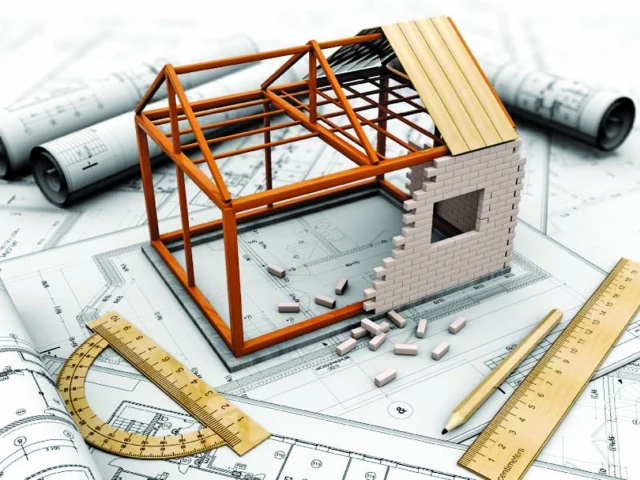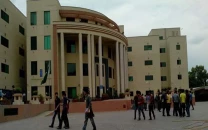Lignik: a solution to housing issue
Energy scientist invents tech for environment-friendly, cost-effective houses

A game-changing biosynthetic technology, called Lignik and invented by Pakistani energy scientist Dr Adeel Ghayur in Australia, is poised to revolutionise the construction industry as this presents a crucial opportunity for Pakistan to take a bold step towards offering environment-friendly and cost-effective housing facilities to the masses that are facing an acute shortage of around 15 million houses.
The first step will involve conducting simulation cost analyses, similar to the approach undertaken in Australia. Pakistan has a shortfall of nearly 15 million houses and the construction of these homes using Lignik and similar materials would not only make the housing market green and sustainable, but it would also contribute to the removal of 150 million tonnes of carbon dioxide from the air.
Additionally, construction at this scale would offset 600 million tonnes of greenhouse gas emissions that would otherwise be associated with the production of bricks, cement and steel for building these houses. These could be used for carbon credits, thereby further improving the economics and lowering costs.
Currently, all cost estimates are based on Australian data. In Australia, the costs are less than half, suggesting that comparable or even more favourable costs could be expected in Pakistan.
"The vision behind Lignik's invention imagines a future where houses are constructed from materials that actively mitigate waste and emissions. With Lignik, the blueprint of tomorrow is not only sustainable and innovative but also economically viable," eminent energy scientist and Chief Technology Officer at Allied Biorefinery in Australia Dr Adeel Ghayur said while talking to The Express Tribune on a WhatsApp call.
"Lignik is fully recyclable; it is well-suited for reuse in practical, real-world applications. This groundbreaking material is both renewable and recyclable, designed to transform the way we build while prioritising sustainability."
He said additionally, the Lignik process enables 100% recycling of its own products, fostering a circular economy with zero waste. Lignik is the world's first biosynthetic wood, microbially produced from carbon dioxide and biowaste, and designed for 3D printing for a wide range of applications.
With housing being the primary focus, Lignik offers a sustainable alternative, effectively replacing traditional construction materials such as wood, bricks, cement and steel.
The 3D printing of a 100-square-metre (25 feet x 43 feet) house is potentially possible within a single day using Lignik.
He said Lignik material is strong, durable and resistant to environmental factors. "Accelerated aging and weathering tests conducted in Australia have demonstrated the material's resilience to the country's harsh environmental conditions. This robustness makes it well-suited for use in Pakistan's climate. Houses constructed with Lignik material can be designed to provide enhanced disaster resistance, particularly against earthquakes and water damage."
Achieving this would necessitate the integration of structural engineering requirements tailored to disaster-prone regions into the building design.
Beyond its exceptional physical properties, it stands out as a unique material that actively removes carbon dioxide from the atmosphere during production, effectively contributing to reversing climate change. The construction of a single 100-square-metre house using Lignik can remove 10 metric tonnes of carbon dioxide from the air.
He said, "Techno-economic simulations estimate that the upfront capital cost for a commercial-scale facility in Australia is Australian dollar (AUD) 200 million. This facility will have the capacity to produce sufficient Lignik to support the construction of 10,000 houses annually, equating to the removal of 100,000 tonnes of carbon dioxide per year. Notably, this capital cost is solely associated with the production of intermediary chemicals and does not encompass expenses related to house construction. The annual operating costs for the facility are estimated at AUD 42 million.
"In Pakistan, both the operational and capital costs would be significantly lower, primarily due to reduced labour costs."
Ghayur said moreover the adoption of 3D-printing technology could lead to a further significant reduction in labour costs for constructing individual houses. Asian countries are urbanising at an unprecedented pace, with the availability of affordable housing failing to keep pace with current and projected demands.
According to the International Energy Agency, by 2050, construction equivalent to 70 billion square metre of floor area is expected in the Association of Southeast Asian Nations (Asean), China and India alone. This scale of construction would necessitate more than 160 billion tonnes of materials, resulting in an estimated 28 billion tonnes of associated carbon dioxide emissions.
Such extensive construction activities are in stark contrast to the developmental goals of many Asian countries, which emphasise economic growth, job creation, sustainable poverty alleviation, transition to green and resilient infrastructure and achieving 2050 emissions reduction targets.
In addition to significant greenhouse gas emissions, the unsustainable extraction of construction materials is causing severe social and environmental challenges. These include the degradation of fertile topsoil due to clay mining, leading to food insecurity, as well as ecosystem destruction caused by sand mining.
Social issues, such as criminalisation of the construction materials industry, bonded labour and escalating costs, are becoming increasingly prevalent. This situation is not confined to Pakistan but also extends to many other Asian countries.
Furthermore, Pakistan is rapidly depleting its sustainable sources of construction materials, such as sand for concrete and topsoil for bricks, which is exacerbating environmental and social challenges.



















COMMENTS
Comments are moderated and generally will be posted if they are on-topic and not abusive.
For more information, please see our Comments FAQ